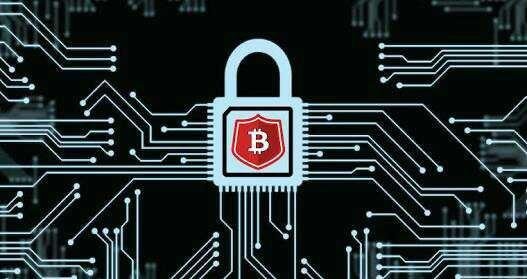3 Things You Need To Know about Bitcoin Security
As we have seen before, Bitcoin is a crypto currency built on the basis of Blockchain, a decentralized Ledger to all network nodes. This makes Bitcoin has many advantages, especially on the security side.

Source Image
Blockchain Bitcoin is almost impossible to hack because of the use of SHA-256 encryption that ensures the human mind will not be able to solve the mathematical puzzle. Then, how exactly does Blockchain provide more security than the conventional transaction processes that exist today?
1. Bitcoin Security With Block
A Blockchain, as the name implies, is a digital "block" chain containing transaction records. Each block is connected to all previous blocks and thereafter, forming a chain. This of course makes hacking harder, because hackers need to change the blocks that contain the data records, as well as other blocks associated with it to avoid detection. In addition, Blockchain has several characteristics that provide additional security means.

Source Image
Security records on Blockchain are secured through "Cryptography" technology. Network participants have their own Private Key known only to the owner. This key is tasked like Pin to make transactions, and acts as a personal digital signature. If a record is changed, the signature will become invalid, and the network will soon know something has happened. Early notifications like this can prevent further damage.
Blockchain is a decentralized technology and is distributed across all peer-to-peer (miner) network nodes that are constantly updated and stay in sync. Because Blockchain is not stored in a central location, Blockchain can not be hacked from a single computer.
To convert 1 small data in Blockchain, it takes a large amount of computing power to access each instance (at least 51% witness) from the participant Blockchain. Changes are done simultaneously. So the bigger a Blockchain network, the higher the level of security.
Blockchain Not Created Equal
Currently, there are two types of Blockchain are known, namely Public and Private (Personal). Each has a number of developer modifications and variations. Public and Private Blockchain differs in some ways and may affect the level of security provided.
The most obvious difference is that Public Blockchain uses a computer connected to the public internet to validate transactions, also merge them into blocks to add to Ledger. Any computer connected to the Internet can participate in the network.
Credits Video From : Hydrogen PlatformPrivate Blockchain, on the other hand, usually only allows organizations that are known to join. Together they form a personal "Business Network" and are only dedicated to members. This distinction has significant implications for the dissemination of potentially confidential information.
Another difference is, Public Blockchain is usually designed with the principle of anonymity, whereas Blockchain Personal uses an identity for membership confirmation and access rights.
Public and Private Bitcoin blockchain also has a difference in how transactions are verified. Basically, for transactions to be added to Blockchain, network participants must agree that the transaction is correct. Confirmation is made through a process known as consensus or collective agreement.
Bitcoin is by far the most famous example of Public Blockchain and can be achieved through mining consensus. In Bitcoin mining, computers on the network (miners) are trying to solve complex cryptographic problems to create working evidence. The drawback is, this process requires enormous computing power and resources, especially for large-scale Blockchain like Bitcoin.
On the one hand, the Personal Blockchain consists of a small network, and consensus can be achieved through a process called "Selective Support"; known users will have the ability to verify transactions. Private Blockchain is profitable for businesses, as only participants with appropriate access and permissions are able to participate and retain Ledger. The downside is, if at any time there are "insiders" who intend to hack the network, then it is possible because they have access permissions.
From here, it can be concluded that within the scope of Bitcoin, its Blockchain is not suitable for use in any particular organization or business. That's because the nature of Blockchain Bitcoin is Public, so no matter the data is secret or not, the information will continue to spread throughout the network nodes. In addition, Blockchain with a mining model is impractical for use by an organization, as Blockchain with a mining system requires an increasingly large resource for each created block.
But in terms of security, Public Blockchain has high security because network nodes are created globally, and consensus is done by millions of nodes from all over the world. Whereas Private Blockchain only has very limited nodes, and this allows hacking.
2. How Safe Is Blockchain Bitcoin?
The essence of using Blockchain is to facilitate people who do not trust each other to share valuable data. Blockchain is made using sophisticated math and innovative software rules that are very difficult (almost impossible to manipulate).
In Blockchain Bitcoin, ledgers are stored in multiple copies on a computer network (node). Every time someone sends a transaction to the ledger, the node checks to ensure the validity of the transaction.
Two things that make Blockchain Bitcoin network safe are:
- "Signature" or unique cryptographic signature for each block.
- Consensus Protocol, which is a process of obtaining mutual agreement that a transaction is valid.
The signature, also called Hash, takes a lot of computational time and energy, so it serves as proof that miners who add blocks to Blockchain have done computing work to earn Bitcoin rewards. This process we are familiar with Proof-of-Work or Proof of Work. PoW also functions as a kind of seal, because to convert a block will require a new Hash.
Hash also serves as a link in Blockchain because each new block includes a unique Hash from the previous block. So, if you want to change the entries in the ledger retroactively, you also have to calculate a new Hash, not just for that block, but also for each subsequent block. If the new block is in conflict with an existing one, the other node will automatically reject the change. This is what makes the tamper-proof Blockchain real, which we know as "immutable".
3. Security Risks Blockchain Bitcoin
From the creation and management of Ledger Blockahin, it is certain that the network is impossible to hack. However, there are still security risks arising from third party, namely:

Source Image
Wallet Vulnerability
There is a real vulnerability of the Bitcoin Wallet when it comes to hacking and theft. A report from the University of Edinburgh research team said they found the weakest points in the exploited hardware Wallet. In addition, there are other security risks such as Phishing, Malware, and so on. These illegal activities can steal Private Address and Private Key users, so hackers are able to steal funds from the Bitcoin Wallet. From this issue, it is recommended to keep the address and private key in Offline, or on a separate computer that is not connected to the Internet network.
Cyber Attack
Cyber attacks are usually directed to the stock as the 3rd party most vulnerable to attack. This is because they implement their own security system (not Blockchain). The attack is commonly known as Distributed Denial of Services (DDoS). A report from Imperva shows that in recent years, Bitcoin's stock has become a favorite target of DDoS attacks.
Mt. Gox, one of the world's largest Bitcoin exchanges, in 2014 has suffered a DDoS attack that caused losses of up to 850,000 BTC units or $ 7.2 billion. The tail, Mt. Gox is unable to recover and go bankrupt.
Bitfinex, one of the largest exchanges has also reported that they face DDos attacks repeatedly towards the end of 2017.
The latest incident occurred in early 2018, when Coincheck was hacked with a loss of $ 530 million
Fraud In Mining
Because Blockchain Bitcoin uses the Proof-of-Work consensus, the law of the jungle takes place here. That is, who has the greatest computing power will dominate Bitcoin mining activities.
Miners who have the greatest dominance can selfishly spend the chance of creating new blocks, and take all the rewards that exist, so that small miners will die. Such conspiracies, on a large scale, can be combined with the "Sybil" attack capable of causing huge losses in the mining world of Bitcoin.
Dual Expenditure
Although up to now there have been improvements to the Blockchain Bitcoin network, there is still a risk of double expenditure.
Hackers can perform attacks that will enable them to benefit from the use of coins for the same two transactions (Dual Spending).
Attack 51%
A 51% attack can be done when Mining Pool becomes too strong, and has a Hash dominance of 51% or more of all Hash strengths in the Blockchain Bitcoin network. If a group gains this much strength, then they can manipulate transactions either by mining invalid blocks, or performing double expenditures freely
The use of the ASICS mining rig requires miners to join the Mining Pool. For example, Antpool as a Chinese mining pond operated by Bitmain Tech, currently controls about 27 - 30 percent of all computing power. If they conspire with another Pool and get a total of 51% power, then the group can manipulate the Bitcoin network as they wish.
reference :
thank you for you'r great informations ...
Great source for bitcoin security, appreciate it.
Your Post Has Been Featured on @Resteemable!
Feature any Steemit post using resteemit.com!
How It Works:
1. Take Any Steemit URL
2. Erase
https://3. Type
reGet Featured Instantly & Featured Posts are voted every 2.4hrs
Join the Curation Team Here | Vote Resteemable for Witness